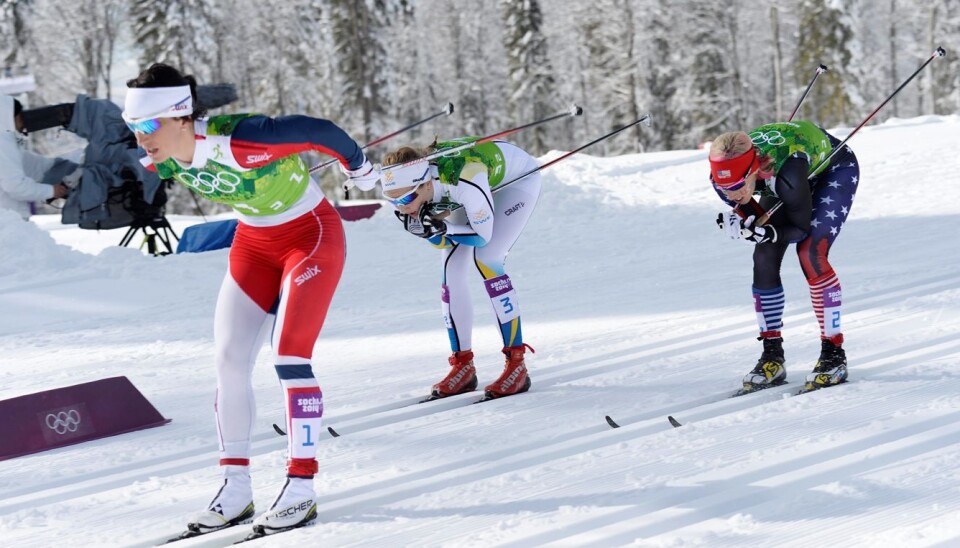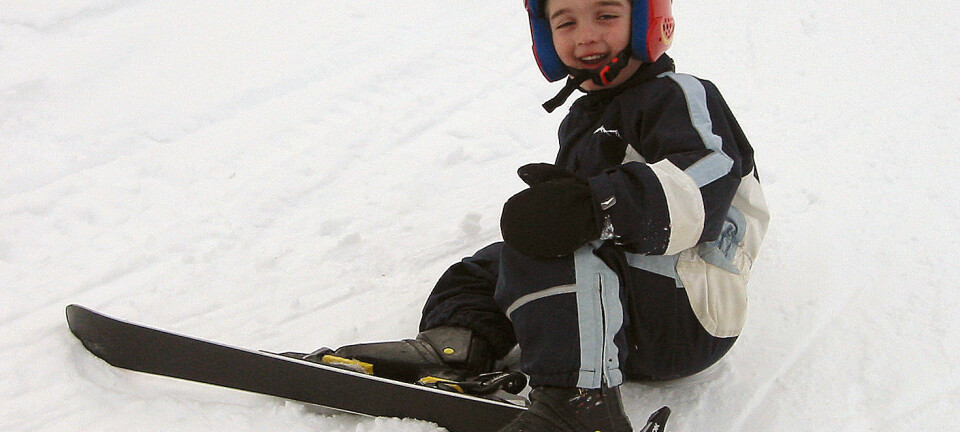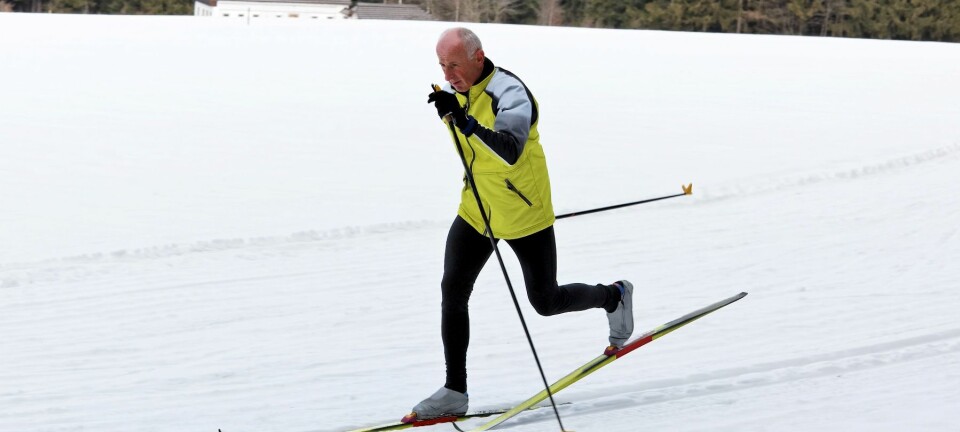An article from Norwegian SciTech News at NTNU

Poling to victory
Female cross-country skiers who want to excel would do well to be inspired by Marit Bjørgen’s muscular upper body. Poling power appears to be a decisive factor in distinguishing the best cross-country skiers in the world from the rest.
Denne artikkelen er over ti år gammel og kan inneholde utdatert informasjon.
When you google the Norwegian cross-country ski champion Marit Bjørgen, “muscle” is the first word that appears – at least in Norwegian. The Sør-Trøndelag county woman is known to have a strong upper body with bigger and more visible muscles than most other female cross-country skiers.
Is that why she is one of the world’s best women cross-country skiers? Ann Magdalen Hegge, a doctoral fellow at NTNU’s Centre for Elite Sports Research, has been looking at exactly this question.
Tested national team athletes
Hegge wanted to find answers to why differences in upper body strength and endurance are so pronounced between male and female skiers. Her PhD project was inspired by a study led by her supervisor, Øyvind Sandbakk, in which he investigated stamina differences between male and female cross-country skiers.
Eight men and eight women at the elite level in cross-country skiing, including several members of the Norwegian national team, participated in the experiment and carried out various training exercises on roller skis and treadmills.

“We discovered that gender differences increased both in performance and maximum oxygen uptake the more the upper body was involved,” says Sandbakk.
“This means that the very best women have very good capacity in the legs, maybe better than the men, but the guys have more endurance when it comes to the upper body.”
Distinctions between the sexes
The athletes undertook various exercises, including poling, roller skiing on a treadmill and running on a treadmill. The results showed that the men were about 10-12 percent faster when it came to legwork, and over 20 percent faster in poling exercises where upper body strength was key.
From this, the researchers concluded that the men used their upper bodies more efficiently than the women. Gender differences were especially notable involving the upper body, particularly around poling technique. It is often faster just to pole than to do a diagonal stride and double pole with a kick, and so several athletes have started to focus their training on improving their poling technique.
Upper body strength and stamina are important in cross country, since a lot of the forward momentum comes from poling and requires big bursts of power in a short time. Core strength is important to stabilize the body, and well-trained arm muscles are also advantageous.
Less absenteeism with stronger upper body
Sandbakk sees that the difference between the sexes is mainly due to the fact that women use less power per stroke, indicating that female skiers may be too weak in their upper bodies. The post doc and national team training adviser believes that upper body training must become a greater focus of those who pursue sports at the highest level.
“This isn’t just about top athletes. Recreational athletes also do too little upper body training,” Sandbakk says.
“Legs do the biggest job and are what carry us around when we walk, bike and jog, and we tend to forget the upper body. We also think there is a lot to be gained here related to sick leave and back and neck ailments.”
Why the big differences?
Doctoral candidate Hegge from the Netherlands has continued working to find out why such a great distinction exists between the sexes. She already ran an experiment last autumn with 25 elite junior and senior athletes participating.
“We know that the gender differences are greatest in activities requiring more upper body strength, like in poling technique. That’s why we divided this exercise into several parts. In the first part the athletes could use their whole body. Then we eliminated the use of the legs, so only the upper body could be used. And finally we blocked off the abdominal region, so participants could only use their arms,” says Hegge.
The purpose of this experiment was to find out how big the gender difference was. Preliminary analysis indicates that men produced about twice as much power as the women in all the exercises, but that the difference was somewhat bigger in the arm and stomach regions. Hegge also took measurements of the athletes’ muscle mass and how much upper body training they did. She finds that muscle mass differences are greatest in the upper body.
Testing Bjørgen
Upcoming experiments will take place on the ski trail, where athletes will be observed so researchers can find out exactly how much they use various techniques, such as diagonal stride and poling. Hegge believes this experiment will show that women use fewer techniques that tax the upper body, and that the results may explain why female cross-country skiers have less upper body strength.
She has also surveyed Norway’s national skiing stars to find out how well trained they are in different techniques.
“I think many women have the potential to become better skiers if they increase their upper body training. It’s already happened with several female athletes here,” says Hegge.
--------------------------------
This article was originally published in February 2014 and was updated in February 2015 with the latest research results.
































